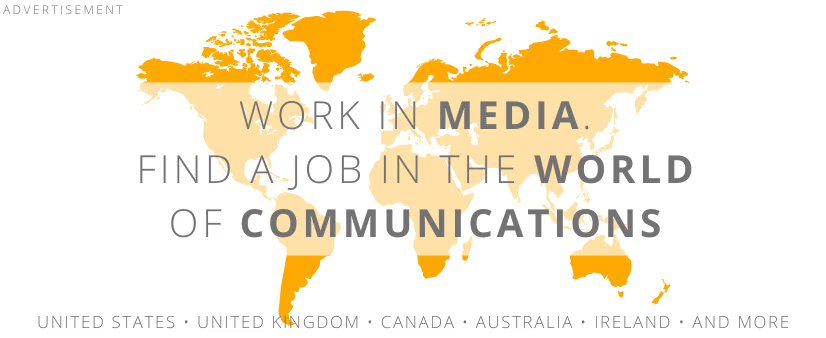 illustration: DALL-E
illustration: DALL-EAs many as 93% of media organizations affiliated with the European Broadcasting Union (EBU) declare that diversity is a priority for them. More than half (60%) have formal DEI strategies, and half employ dedicated staff responsible for implementing these efforts.
These are no longer just declarations. According to the report "PSM Diversity Strategies 2025," produced by Dorien Verckist and Emma Ryborg from the EBU, public media are taking concrete steps to ensure balance within their structures and in the content they produce.
It is worth noting that 66% of organizations implement actions covering at least three different diversity dimensions, such as gender, age, or disability. In 2023, as many as 79% of organizations actively promoted gender balance, while 72% took initiatives to support people with disabilities.
Diversity in Content and Teams
Public broadcasters use an average of ten different tools to support diversity within their staff structures. The most popular include:
- DEI training for employees.
- Mentoring and career development programs for underrepresented groups.
- Revisions of recruitment and promotion procedures to ensure equal access to positions.
- Quantitative and qualitative goals related to employment across various social groups.
- Creating content codes and guidelines for inclusive language.
- Facilities for people with disabilities, including workplace adjustments.
Most organizations focus on ensuring gender balance (79%) and inclusion of people with disabilities (72%). Unfortunately, in some aspects of diversity - such as sexual orientation or religion - actions are significantly less advanced.
| Action Area | Share of Organizations (2023) |
|---|---|
| Gender balance | 79% |
| Inclusion of people with disabilities | 72% |
| Age diversity | 58% |
| Racial and ethnic diversity | 51% |
| Socio-economic status | 49% |
| LGBTQI+ and sexual orientation | 39% |
| Religious diversity | 36% |
It is clear that while gender equality and support for people with disabilities are priorities, other dimensions of diversity are still neglected.
Monitoring and Reporting. Do the Data Tell the Truth?
One of the main challenges faced by public media is monitoring the effects of implemented strategies. As many as 73% of organizations collect diversity data within their teams, while 54% also analyze content diversity.
The tools used in this area are diverse - from surveys and reports to content monitoring and even the use of artificial intelligence for data analysis. However, the lack of consistent methodologies and difficulties in collecting data on minority groups, such as LGBTQI+ individuals or ethnic minorities, remain problematic.
Biggest Challenges in Diversity Management
Despite implemented strategies, many organizations encounter difficulties in their execution. The most frequently cited issues are:
- Lack of unified standards - different countries use different approaches to diversity data monitoring.
- Legal issues - in some countries, regulations prevent the collection of data on sexual orientation or gender identity.
- Implementation challenges - despite good intentions, structural changes often face internal resistance.
- Low representation in senior positions - although the number of women on boards is increasing, they still remain a minority at the highest levels.
- Content monitoring difficulties - it is challenging to analyze whether productions truly reflect social diversity.
What Has Been Achieved?
Despite difficulties, the efforts are yielding results. Public media are becoming leaders in gender balance - women now make up 45% of employees and 46% of management staff. In 2023, half of the promotions went to women, indicating that DEI strategies are bearing fruit.
Moreover, more and more organizations are focusing on transparency - 72% of them publish diversity data about their teams. This not only builds trust but also motivates further action.
The Future of Diversity in Media
The report PSM Diversity Strategies 2025 shows that diversity is becoming an integral part of public media operations. The coming years will bring further strengthening of gender equality efforts and the integration of people with disabilities, but intensifying efforts in less developed areas, such as racial diversity or sexual orientation, is also necessary.
Through an integrated approach to DEI, public media can not only improve their image but also increase audience trust. This is an opportunity to build more open and diverse editorial teams that better reflect the complexity of modern society.
The full report "PSM Diversity Strategies 2025" is available at European Broadcasting Union
COMMERCIAL BREAK
New articles in section Media industry
Journalism in the age of AI. Why people prefer humans over machines
Krzysztof Fiedorek
Only 12% of people accept news created solely by AI, while 62% prefer those written by humans. At the same time, only 19% notice labels indicating the use of artificial intelligence, while younger audiences ask AI to explain the content to them. These are the findings of the Reuters Institute report on artificial intelligence in media.
Why do we believe fakes? Science reveals the psychology of virals
KFi
Why do emotions grab more attention than evidence, and why can a fake authority overshadow scientific data? Researchers from Warsaw University of Technology, Jagiellonian University, and SWPS University in Poland sought the answers. Here are their findings.
Investigative journalism in Europe. Newsrooms face pressure
KFi, Newseria
Media and political representatives point to the difficult situation of investigative journalism in Europe. Newsrooms are reluctant to invest in this segment due to high costs and the large amount of time and effort required. Most of all, however, they fear legal proceedings.
See articles on a similar topic:
Media Subscriptions to Replace Advertising. TMT Predictions 2018
BARD
Some publishers already consider attempts to generate revenue from online advertising a waste of time. According to the "TMT Predictions 2018" report by Deloitte, by the end of 2018, half of all adults in developed countries will have at least two online media subscriptions.
Clickbait Uncovered. How Online Headlines Evolved Over 25 Years
Krzysztof Fiedorek
Researchers from the Max Planck Institute analyzed 40 million headlines from the past 25 years. They are getting longer, more emotional, and negative, with a clear influence of clickbait style. Even reputable media use strategies and tricks to grab attention.
AI changes the game. A new face of internet search
KFi
Half of consumers in the US already use AI-powered search. By 2028, purchase decisions worth $750 billion will be made through AI. These findings come from McKinsey’s report "Winning in the age of AI search".
Dead internet theory is a fact. Bots now outnumber people online
Krzysztof Fiedorek
Already 51% of global internet traffic is generated by bots, not people. As many as two-thirds of accounts on X are likely bots, and on review platforms, three out of ten reviews weren't written by a human. Do you feel something is off online? It's not paranoia. In 2025, it's a reality.





























